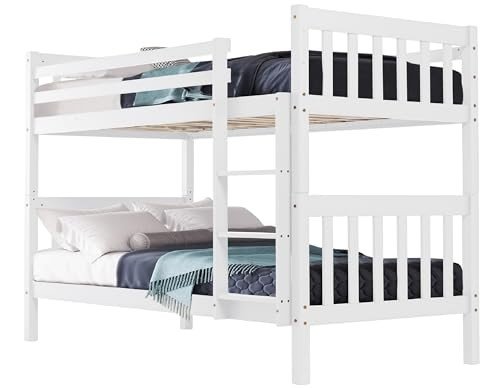The Leading Reasons Why People Perform Well With The Kids Bunkbed Industry
Title: The Ultimate Guide to Kids Bunk Beds
Intro
As children grow, so does their need for area and storage options. Bunk beds are an outstanding way to make the most of space while providing an enjoyable and practical sleeping plan for your kids. This detailed guide will check out the numerous types, benefits, security factors to consider, and FAQs associated with kids bunk beds.
I. Types of Kids Bunk Beds
- Standard Bunk Beds: These are the most common type, including 2 twin-sized beds stacked on top of each other.
- Futon Bunk Beds: The bottom bunk is changed with a futon, supplying a sofa and a bed in one piece of furniture.
- Twin-Over-Full Bunk Beds: The bottom bunk is bigger, accommodating a full-sized mattress, while the leading bunk is a twin.
- L-Shaped Bunk Beds: These include two beds positioned perpendicularly, offering more flooring area below.
- Loft Bunk Beds: A single bed is put on a raised platform, leaving room for a desk, play area, or storage underneath.
II. Benefits of Kids Bunk Beds
- Space-Saving: Bunk beds are perfect for smaller bedrooms, maximizing floor area for other activities and furnishings.
- Enjoyable and Exciting: Children often delight in the novelty and experience of climbing to their own private sleeping area.
- Cost-Effective: Purchasing one bunk bed is more budget-friendly than buying 2 separate beds.
- Versatile: Many bunk beds can be separated into two different beds as children grow older or when space enables.
- Built-In Storage: Some bunk beds include built-in storage solutions, such as drawers, desks, or shelves.
III. Safety Considerations
- Strong Construction: Ensure the bunk bed is made from tough, long lasting products and has a safe and secure ladder for safe gain access to.
- Appropriate Spacing: Gaps in between the bed mattress and the frame should be less than 3.5 inches to prevent entrapment.
- Appropriate Height: Select a bunk bed with a proper height for your child, considering their age, size, and ability to climb up and down safely.
- Secure Mattresses: Use the right size mattress and secure it to the bed frame to avoid it from shifting throughout sleep.
- Guardrails: Ensure guardrails are installed on both sides of the top bunk and are at least 5 inches higher than the top of the mattress.
IV. FAQs
- What is the perfect age for a child to sleep on the leading bunk?It is generally suggested to wait till a child is at least 6 years old before allowing them to sleep on the top bunk.
- Can bunk beds be separated into two different beds?Yes, some bunk beds can be dismantled and transformed into two different beds.
- How much space is required in between the bottom of the top bunk and the top of the bottom bunk?A minimum of 2 feet 8 inches is advised for head clearance on the bottom bunk.
- Are bunk beds safe for children?When correctly put together and utilized, bunk beds are safe for children. Constantly follow Elia Zehr and guarantee your child comprehends the guidelines for utilizing the bunk bed.
V. Conclusion
Kids bunk beds are a useful and fun service for maximizing area and offering an unique sleeping experience for your children. By thinking about the numerous types, advantages, and security factors to consider, you can make a notified decision when choosing the ideal bunk bed for your household.
